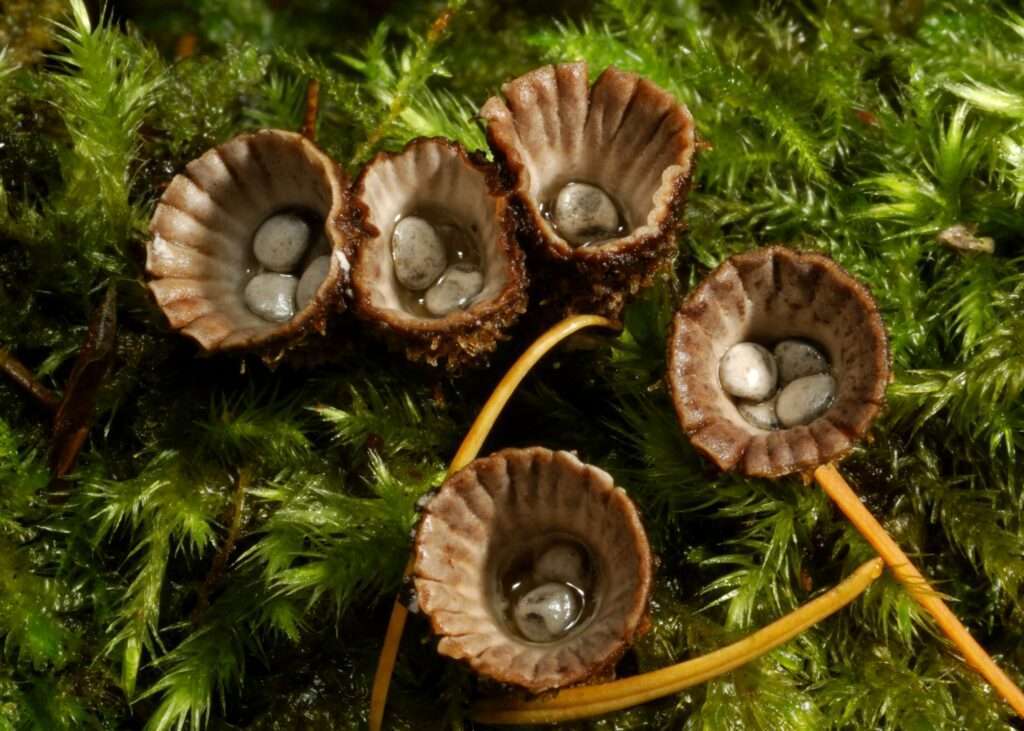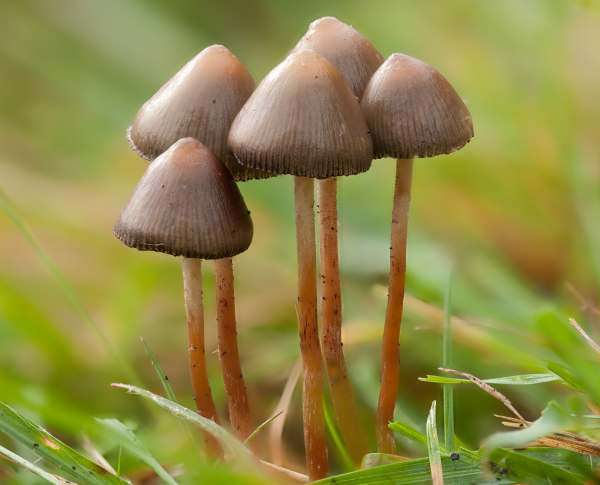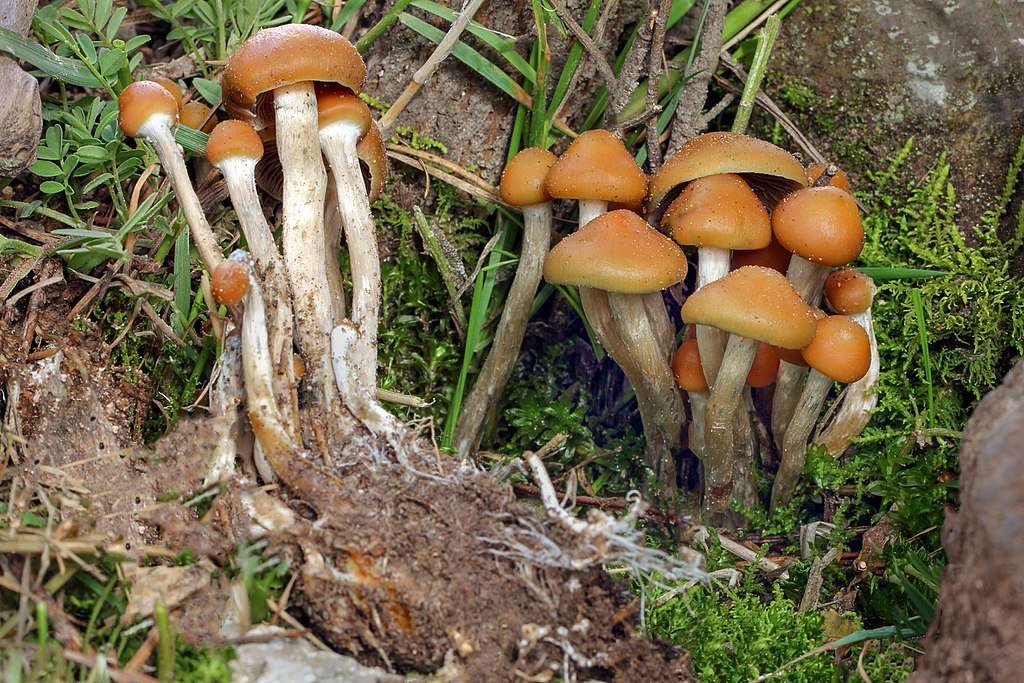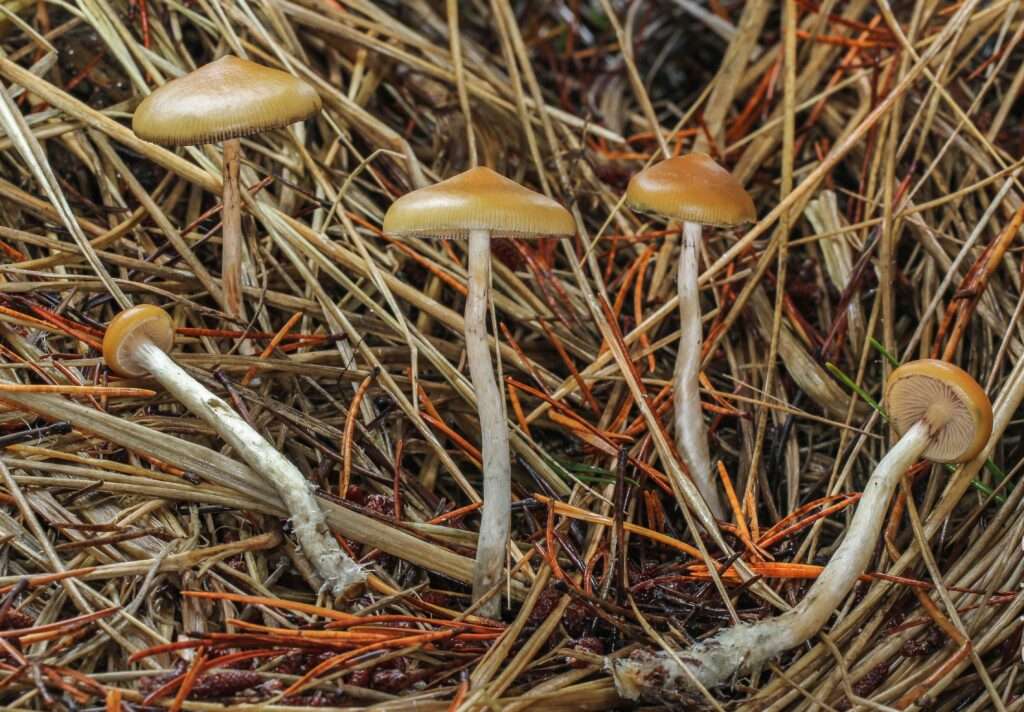
Scientific name
Cyathus striatus
Description
Fluted Bird’s Nest mushroom’s fruiting body is small, with a height of 5–15mm and a top width of 4–8mm. It is shaped like a cone or cup, and its coarsely hairy exterior has a spectrum of brownish colors, from reddish to chocolate to gray-brown. The inner surface includes clear lines or grooves and many peridioles, which are tiny, 0.5-2mm broad oval egg-like structures that range in color from gray to grayish brown. A funiculus, a cable, connects these peridioles to the cup. These mushrooms are simple to ignore because of their diminutive size and light coloration.

Habitat
The saprobic mushroom Cyathus striatus usually grows in clusters on tiny branches or other woody waste and gets its sustenance from decomposing organic matter. It frequently appears on shrub debris. It grows during the summer and fall in temperate regions all across the world and is fairly common. The mushroom has been found in Asia, Europe, North, South, and Central America, and New Zealand.
Uses/Importance
According to in vitro research, six Cyathus striatus striatoids boosted neurite growth in rat cells in a dose-dependent manner. This promising research suggests that these fungi may have neurological benefits. In another research, when compared against more than 30 different mushroom extracts, pancreatic cancer cells exposed to Cyathus striatus culture liquid (50 g/mL) had the greatest level of cell killing. Research is constantly seeking to use the bioactive qualities of mushrooms to treat pancreatic cancer, one of the lethal cancers.
Table





